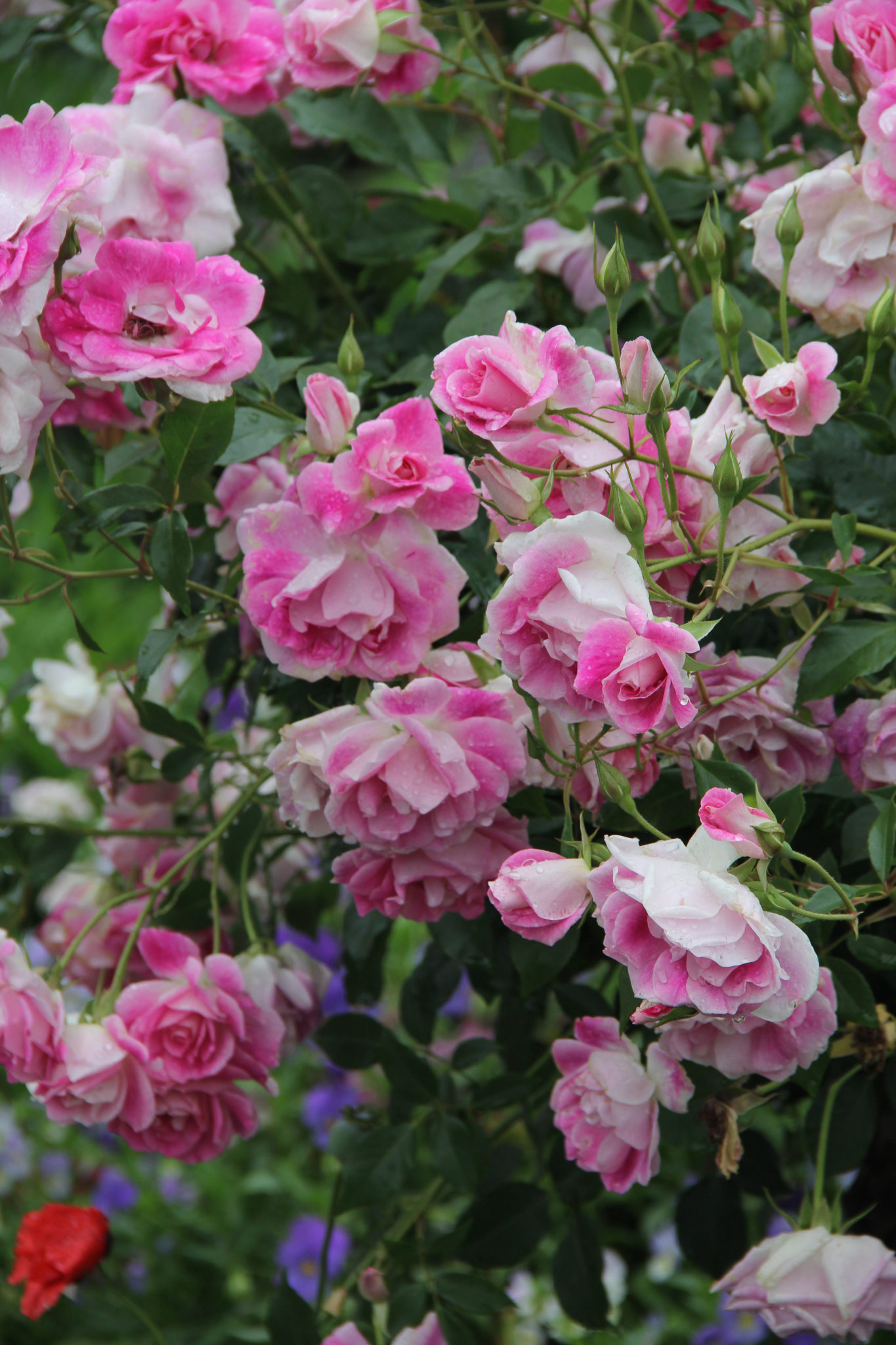Well-known rose breeder Ludwig Taschner explains how easy it is to prune and care for roses
All roses benefit from pruning which gives you the opportunity to remove diseased wood and leaves resulting in better blooming and a healthier plant. In most areas this can be done at the end of July but in colder areas like the Western Cape and Natal Midlands, it’s best to leave this until August. Keep in mind that a light pruning after every flush will also invigorate the bush and promote flowering.
Hybrid teas, floribundas, Fairy Tale, Panarosa, Antico Moderno, spire and miniature roses can all be pruned using the method demonstrated here. The same principle applies to standard roses where it’s also important to remove suckers growing from the foot of the main stem.
The exceptions are listed below:
- Colourscape roses can be topped with hedge shears.
- Climbing roses should be untied and unwound from their supports. Thin the old wood and cut out at the base before stripping the leaves off. Wind the canes around the structure and retie them.
- Most heritage roses don’t like excessive pruning. Just cut out the old, dead wood, shape lightly and retie to the supports, if necessary.
General rules for winter pruning
- Use clean sharp secateurs to get the cleanest cuts possible. Avoid tearing and splitting branches which creates open wounds susceptible to fungus. Wash secateurs with soap and water after use and sterilise them in a solution of water and bleach. Dry thoroughly to prevent the blades from rusting.
- Protect your arms with long sleeves and garden gloves and wear trousers to cover your legs.
- You can prune even if your rose bush is still flowering. Cut the last flowers for the vase.
- Don’t put diseased leaves on the compost heap; burn them or dispose with municipal refuse.
- If you want to move a rose bush, do this right after pruning.
- One of the most common questions is how much should be cut off. The general rule is half to two-thirds. If you want the rose to be slightly taller, leave more. Roses tend to grow longer and develop more stems the older they get. Even if your rose is very tall in its mature state, don’t be afraid to cut it back severely – it will grow back quickly.
Pruning roses step by step
1 Start by removing half to a third of the height of the rose bush – just bunch the the stems together and cut them all the same height. This way you can see all the branches and twigs from above, making it easier to decide how to proceed.
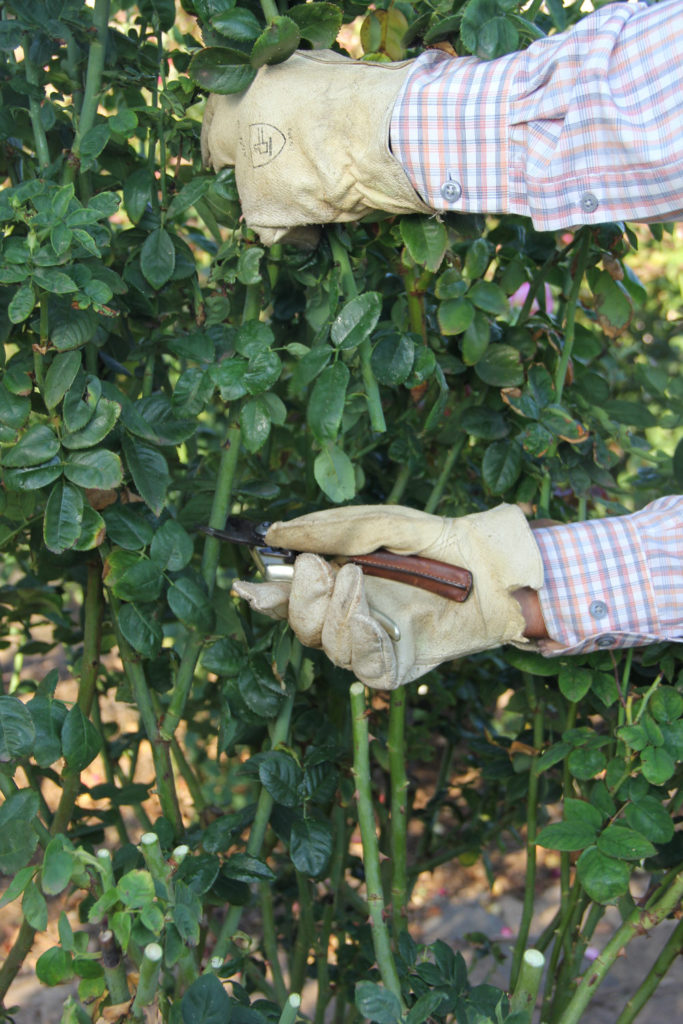
2 Reduce the number of branches. This makes room for new shoots and side shoots in spring.
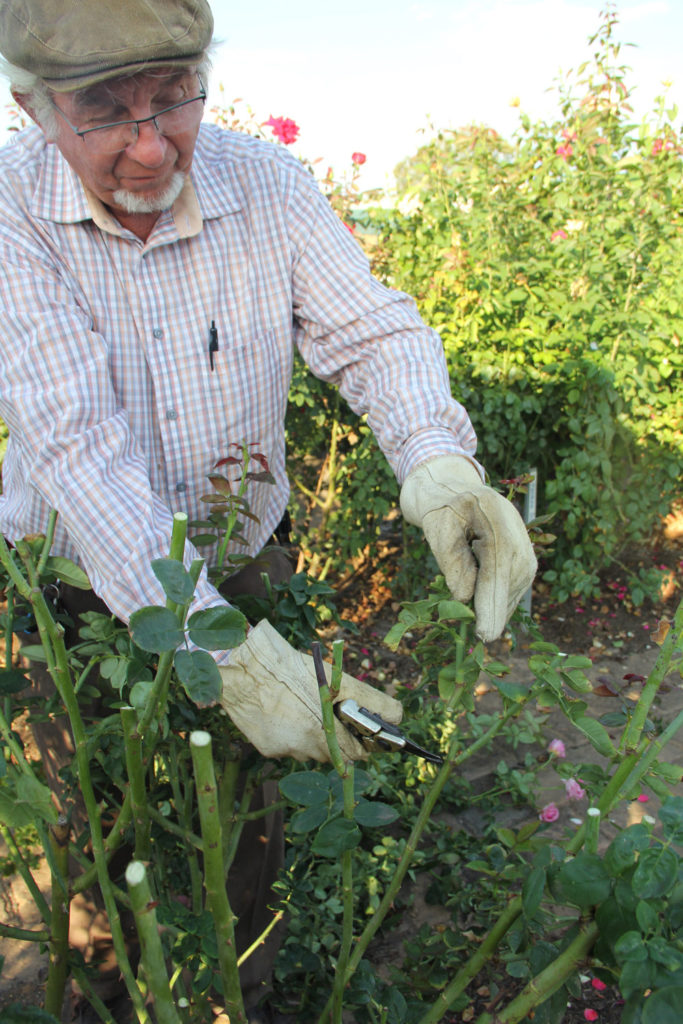
3 Cut out all dead branches, twigs and old wood. Old wood is usually more woody and darker in colour than young canes.
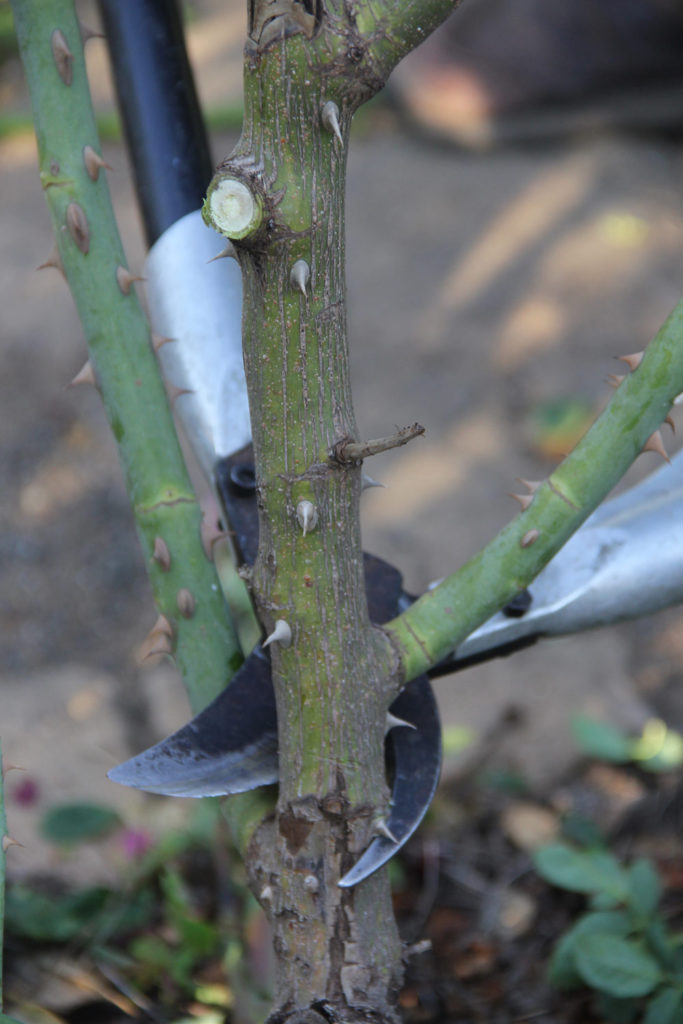
4 Cut off side shoots and branches that are growing towards the centre of the plant. You want to create a cup shape with the number of branches inside the ‘cup’ greatly reduced. The final cut should be 5–10mm above an outward-facing node.
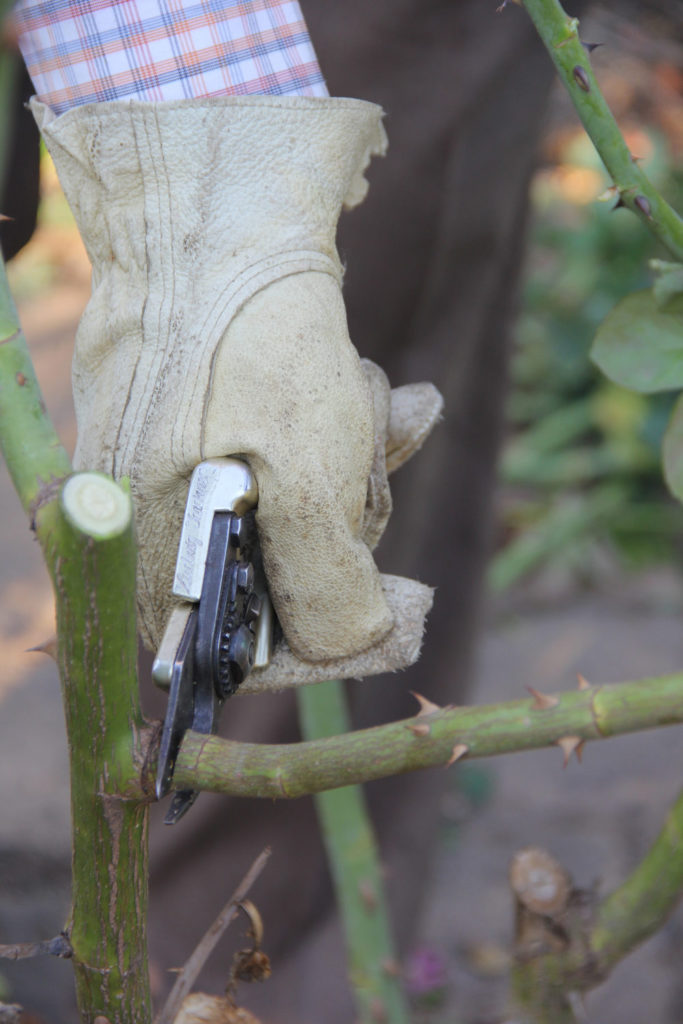
5 Friction wounds can be caused by branches that overlap so using your secateurs as a measure, leave 20–30cm between the remaining branches.
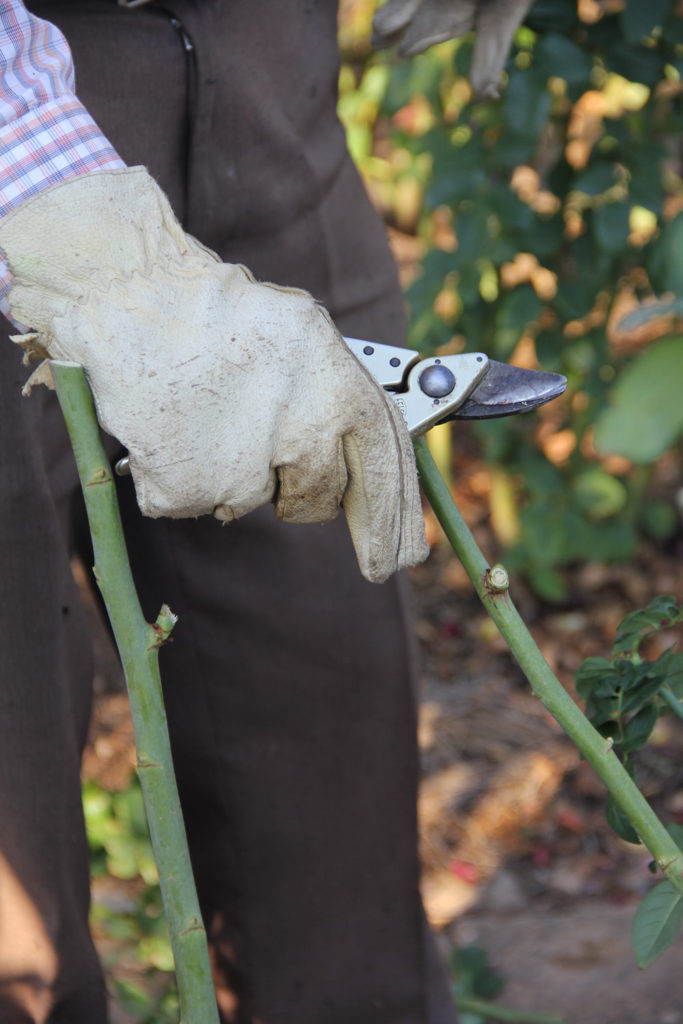
6 Remove the leaves that are left.

Aftercare Q & A
Do I have to seal all the cut ends after pruning?
No, this isn’t necessary.
Should I feed roses after pruning?
No, wait at least a month before feeding for the first time. Then feed with organic granular plant food, Ludwig’s Vigorosa or the new slow-release Ludwig’s Vigo-Longer and mulch with compost.
What should you do after pruning?
Aerate the soil around the rose by making small deep holes with a fork to encourage air to flow to the roots.
Pests and diseases
- Blackspot: Spray with Chronos in rainy and misty weather. It’s not necessary to spray all year round for this fungus.
- Powdery mildew: A combination of bicarbonate of soda and Chronos is very successful in combatting this fungus. You can also use Rose Protector.
- Insects: Kemprin will get rid of beetles, worms and other insects.
- Aphids: Use a chemical spray like Koinor, or 5ml dishwashing liquid in a litre of water.

